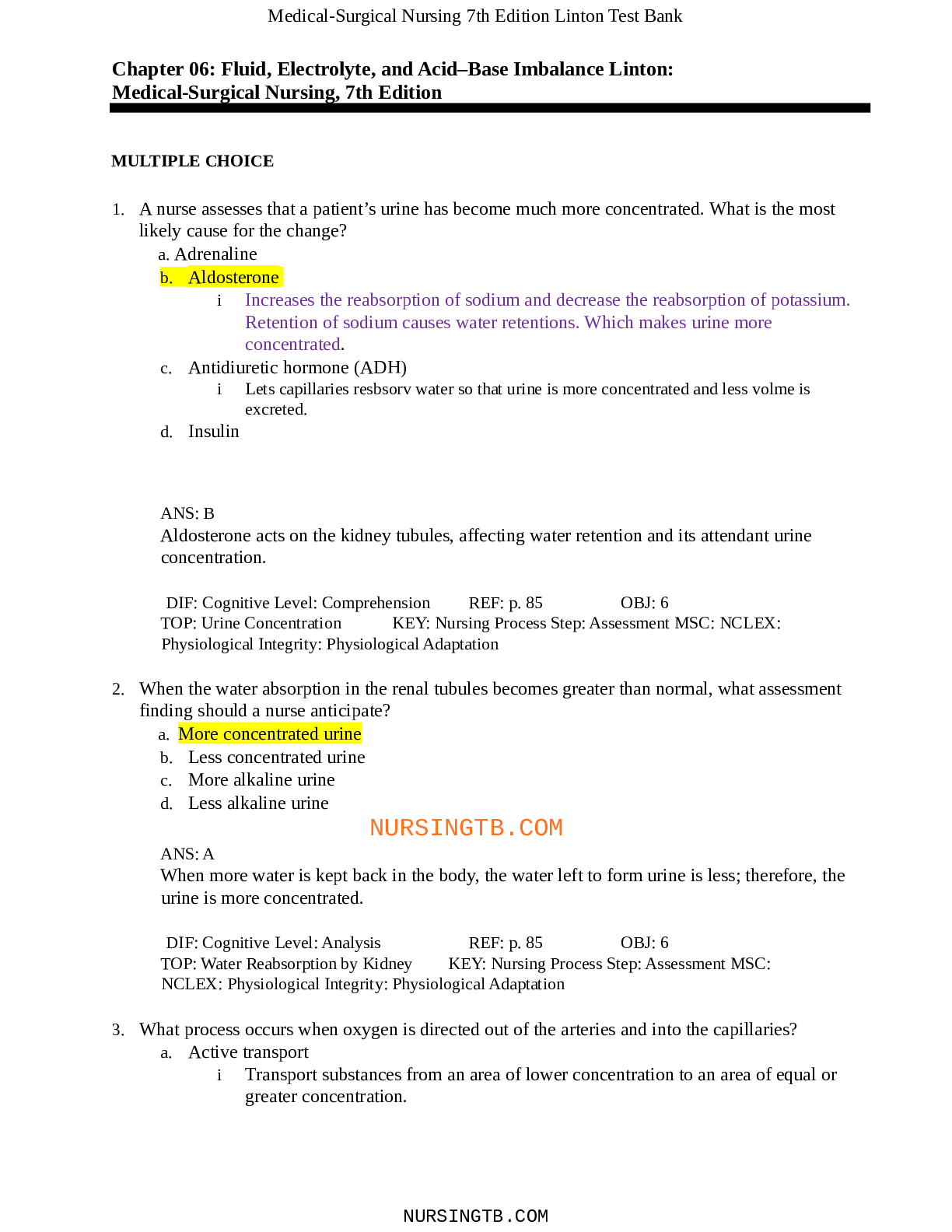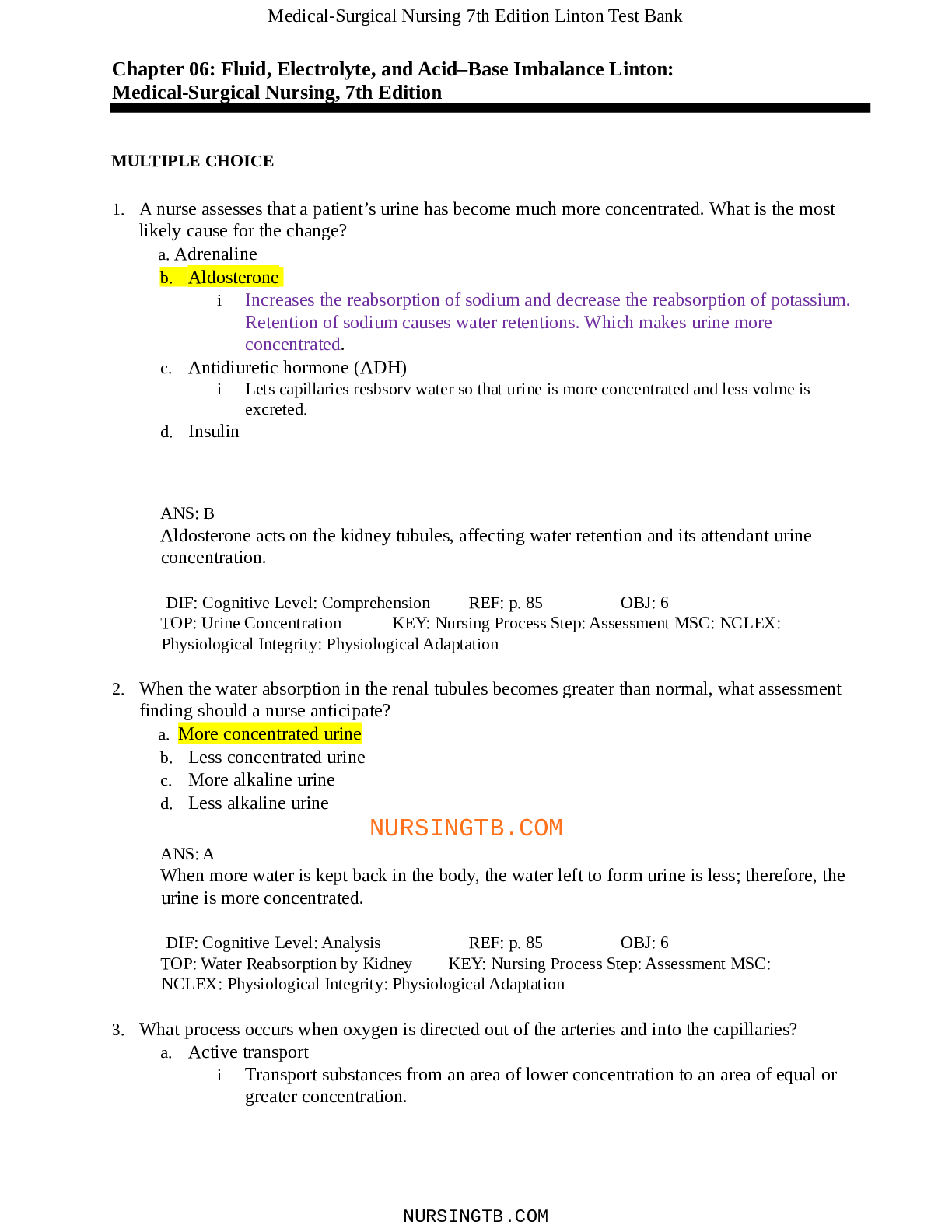Fluid, Electrolyte, and Acid–Base Imbalance Linton(Chapter 06) Medical-Surgical Nursing, 7th Edition
Course
Project Management
Subject
Chemistry
Category
Questions and Answers
Pages
13
Uploaded By
ATIPROS
Preview 4 out of 13 Pages


Download all 13 pages for $ 8.50
Reviews (0)
$8.50
